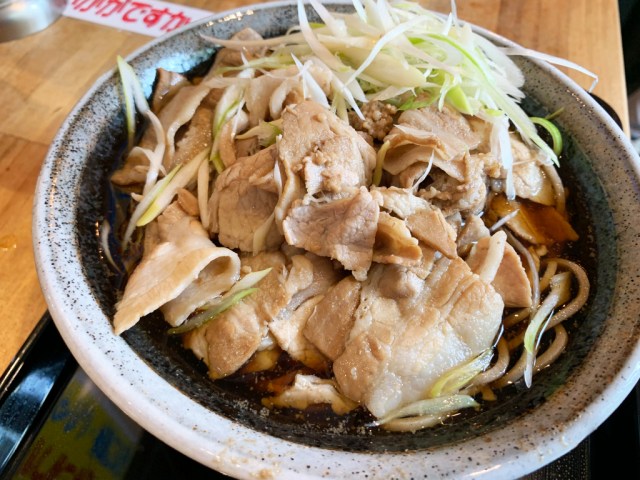
At a time when many small restaurants are going out of business, we speak to the manager of one that took the exact opposite approach.
While some of our staff take joy in tackling gargantuan food challenges, our Japanese-language correspondent Seiji Nakazawa is the resident connoisseur of stand-and-eat (“tachigui”) soba restaurants, having visited just shy 260 of them in Tokyo at this point. A restaurant called Nojiro recently became Seiji’s 269th stand-and-eat soba shop experience, but something special sets this one apart from all of the others he’s visited–the fact that it opened in the middle of a global pandemic when many eateries are suffering a loss of business.
Nojiro is close to Ekoda Station on the Seibu Ikebukuro Line. To get there, leave from the station’s North Exit and walk down a short street lined with shops.
Before long you’ll spy a new-looking wooden building–that’s Nojiro.
The large black banner by the door advertising its name is perhaps more reminiscent of a ramen restaurant than anything else, but underneath the name “stand-and-eat meat soba and meat udon” is clearly noted.
Any noodle dish on the menu could be ordered with either soba or udon noodles as the base. Sample items on the ticket machine include noodles with meat (pork) for 500 yen (US$4.60), plain noodles in broth for 300 yen, noodles with a croquette for 400 yen, and noodles with mixed vegetable and seafood tempura for 460 yen. These are definitely reasonable prices for a stand-and-eat soba shop.
Seiji decided to go for the meat soba and also ordered an extra serving of meat topping for an additional 150 yen. While waiting, he took note of a large bottle of chili oil on the table.
Before long a piping hot bowl of noodles was placed in front of him. He took one look at it…
…and thought to himself, “HOLY COW! Look at all that pork!”
While he had indeed ordered extra meat, he couldn’t even see the noodles underneath it all. Was it a noodle dish with meat, or a meat dish with noodles?
After taking a bite he noted that the pork was delightfully tender and juicy. Its flavor also seeped out into the broth, deepening the flavor and adding a natural sweet and salty edge to it. The broth itself was prepared using a special dashi stock made of frigate tuna, mackerel, and kombu, as he later found out.
He tried adding a little of the chili oil he had spied earlier. It added a tingling spiciness and intensified all of the flavors.
In a way it almost made the soba noodles lose their unique buckwheat taste, so he would probably pass on the oil next time.
The noodles were pleasantly plump. Taking into account the portion size, quality of the meat, and price as well, it was an all-around solid bowl of soba.
At that point Seiji ventured to chat a bit with the manager, Mr. Mitsuda. He was particularly curious to hear more about the opening of the restaurant just a few months ago.
Seiji: “Does Nojiro have any sister restaurants?”
Mr. Mitsuda: “Well, the owner runs a Chinese-style restaurant over in Itabashi [a neighboring district of Tokyo] called ‘Jiro’s Table.’ This is his first stand-and-eat soba restaurant.”
Seiji: “Even if it’s the first, it’s incredibly delicious. Had you ever worked at a soba restaurant before this?”
Mr. Mitsuda: “Thank you. Actually, I perfected this flavor while working at Den Soba in Kodemmacho and Nakajima Shoten in Itabashi.”
Seiji: “Ten Soba, huh–that’s nostalgic [Ten Soba was the 142nd stand-and-eat soba shop that Seiji visited]. On a different note, why did you open this restaurant smack in the middle of the pandemic?”
Mr. Mitsuda: “The owner had always wanted to open a stand-and-eat soba restaurant. As part of our initial research, the two of us went around sampling various similar places, especially the one-man operations. While doing so, we saw several that were absolutely thriving. We thought that this could be a success even at a time like this.”
It sounded to Seiji like they had taken a leap of faith, but also one of confidence, in their undertaking. The place was certainly bustling when he visited at lunchtime and it had already gathered a devoted regular crowd. He attributed its success during the pandemic to a variety of factors including its fast service, relatively hygienic physical setting (no sitting means no unnecessary post-meal lingering, after all), and cheap prices.
Restaurant information
Nojiro / のじろう
Address: Tokyo-to, Nerima-ku, Kotake-cho 1-57-5
東京都練馬区小竹町1-57-5
Open 8 a.m.-7 p.m.
Closed Sundays
All images © SoraNews24
● Want to hear about SoraNews24’s latest articles as soon as they’re published? Follow us on Facebook and Twitter!
[ Read in Japanese ]

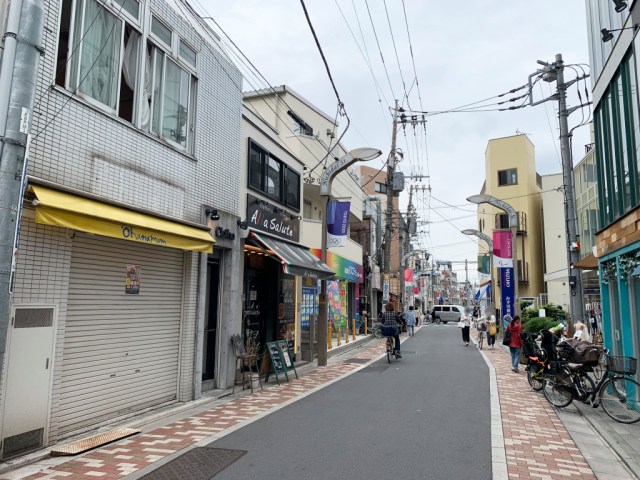
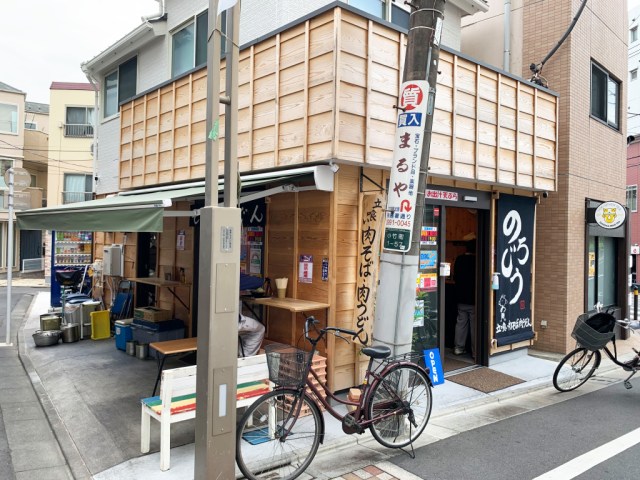
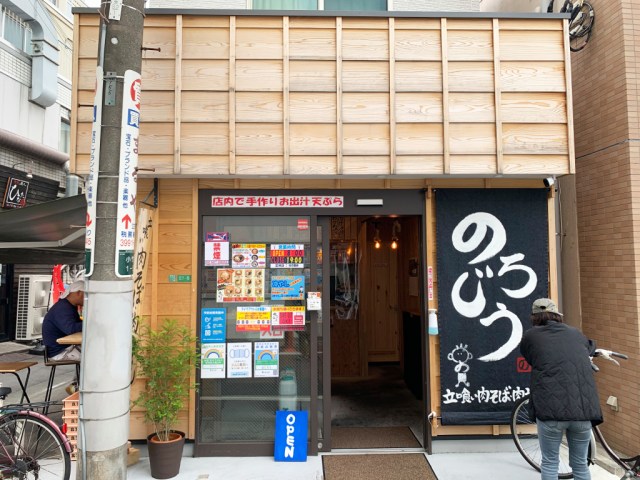
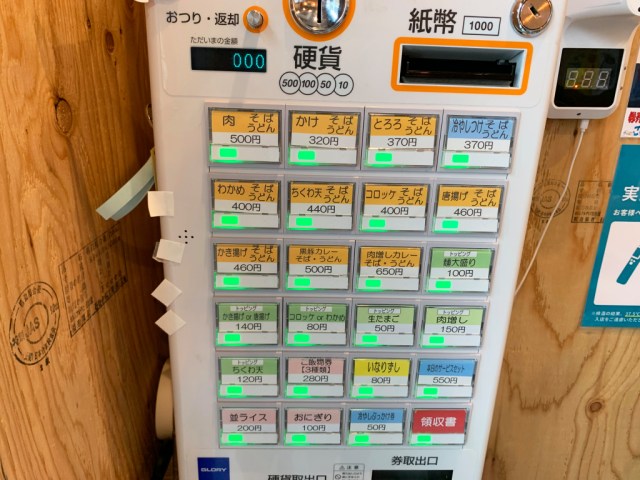
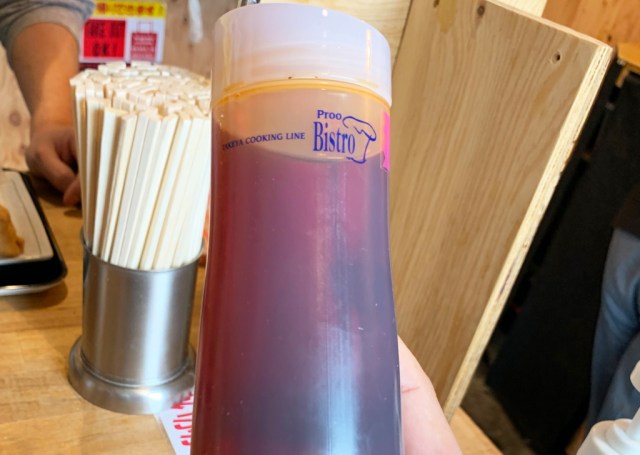

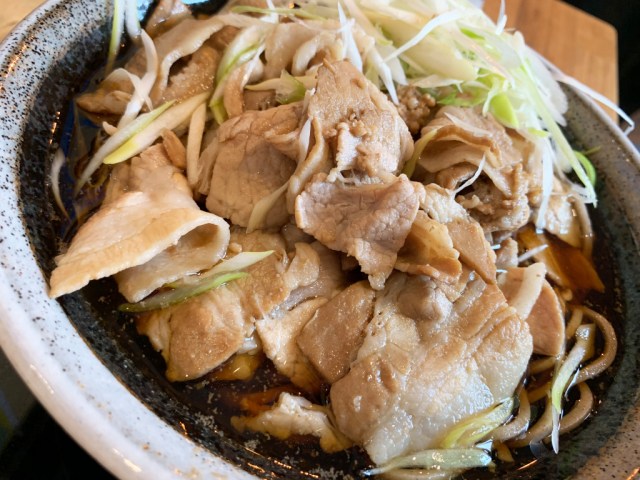
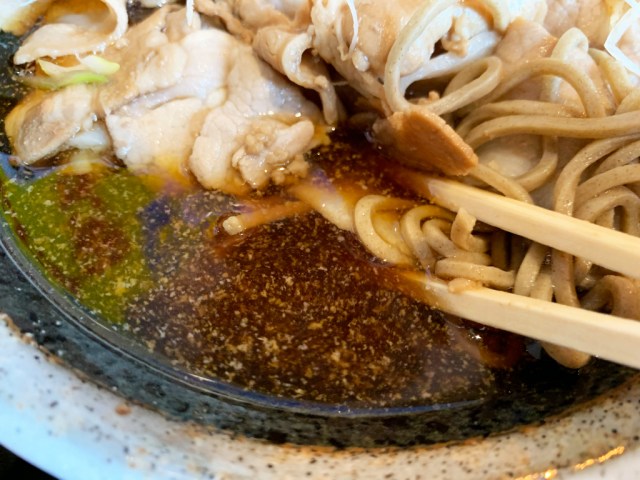
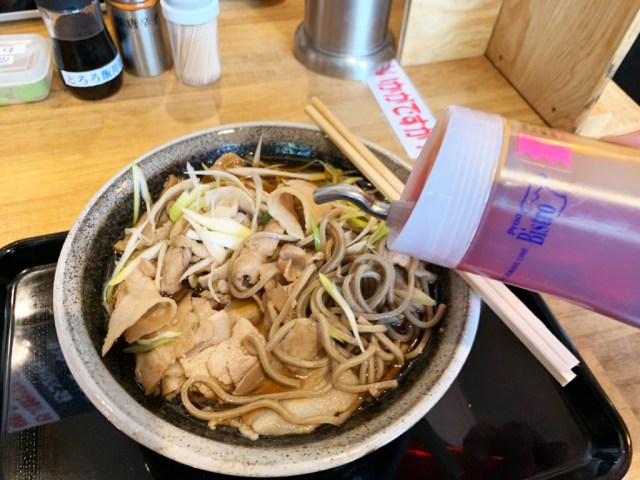
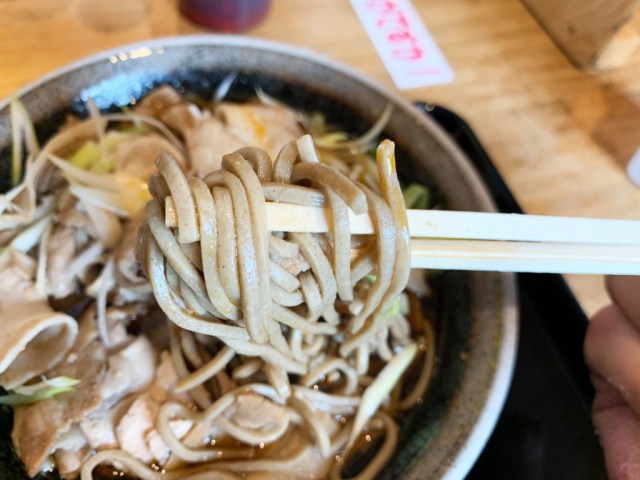
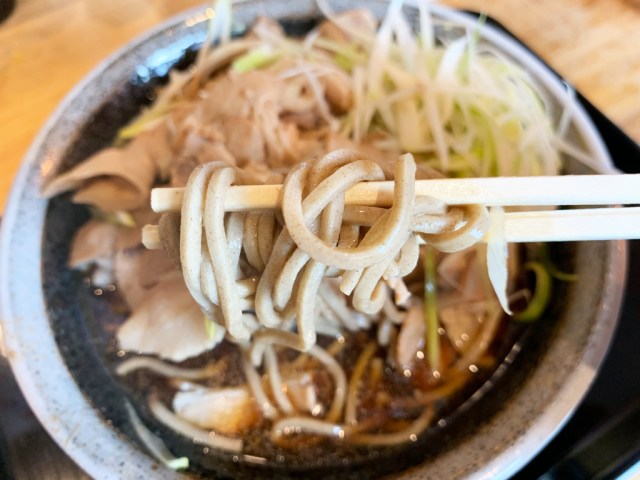
 Shibuya City Office serves up insanely cheap soba noodles, but are they any good?
Shibuya City Office serves up insanely cheap soba noodles, but are they any good? Saga Prefecture’s hidden gem of a soba restaurant offers scrumptious, full course soba meals
Saga Prefecture’s hidden gem of a soba restaurant offers scrumptious, full course soba meals What does a family restaurant in the middle of nowhere, Hokkaido, serve? We find out
What does a family restaurant in the middle of nowhere, Hokkaido, serve? We find out We try cooking yakisoba with real Japanese buckwheat soba【SoraKitchen】
We try cooking yakisoba with real Japanese buckwheat soba【SoraKitchen】 We find Italian Soba at an Aomori fish market that insisted it’s perfect for the beach
We find Italian Soba at an Aomori fish market that insisted it’s perfect for the beach Japan’s new difficult-to-drink-from beer glass protects your liver, but it’s a brutal experience
Japan’s new difficult-to-drink-from beer glass protects your liver, but it’s a brutal experience How to order snacks on a Shinkansen bullet train in Japan
How to order snacks on a Shinkansen bullet train in Japan Demon Slayer: Kimetsu no Yaiba gets new roller coaster attractions and food at Universal Studios Japan
Demon Slayer: Kimetsu no Yaiba gets new roller coaster attractions and food at Universal Studios Japan New Pokémon ice cream, dessert drinks, and cool merch coming to Baskin-Robbins Japan【Pics】
New Pokémon ice cream, dessert drinks, and cool merch coming to Baskin-Robbins Japan【Pics】 Burger King Japan suddenly adds Dr. Pepper and Dr. Pepper floats to its menu nationwide
Burger King Japan suddenly adds Dr. Pepper and Dr. Pepper floats to its menu nationwide Hello, cosmetics! Clinique teams up with Hello Kitty this summer for first-time collaboration
Hello, cosmetics! Clinique teams up with Hello Kitty this summer for first-time collaboration “The most Delicious Cup Noodle in history” – Japan’s French Cup Noodle wins our heart【Taste test】
“The most Delicious Cup Noodle in history” – Japan’s French Cup Noodle wins our heart【Taste test】 To combat declining birth rate, Japan to begin offering “Breeding Visas” to foreigners
To combat declining birth rate, Japan to begin offering “Breeding Visas” to foreigners Starbucks teams up with Japanese shochu brewery for a whole new coffee experience
Starbucks teams up with Japanese shochu brewery for a whole new coffee experience Studio Ghibli releases giant Totoro plushies in Japan
Studio Ghibli releases giant Totoro plushies in Japan Nintendo history you can feel – Super NES, N64, and GameCube controllers become capsule toys
Nintendo history you can feel – Super NES, N64, and GameCube controllers become capsule toys Starbucks releases a cute Frappuccino and Unicorn Cake…but not in Japan
Starbucks releases a cute Frappuccino and Unicorn Cake…but not in Japan Kyoto Tower mascot termination reveals dark side behind cute Japanese characters
Kyoto Tower mascot termination reveals dark side behind cute Japanese characters McDonald’s Japan’s Soft Twist Tower: A phantom ice cream only sold at select branches
McDonald’s Japan’s Soft Twist Tower: A phantom ice cream only sold at select branches Yabai Ramen: What makes this Japanese ramen so dangerous?
Yabai Ramen: What makes this Japanese ramen so dangerous? Finally! Nintendo Japan expands Switch 8-bit controller sales to everybody, Online member or not
Finally! Nintendo Japan expands Switch 8-bit controller sales to everybody, Online member or not Japanese government wants to build luxury resorts in all national parks for foreign tourists
Japanese government wants to build luxury resorts in all national parks for foreign tourists 10 things you should buy at 7-Eleven in Japan
10 things you should buy at 7-Eleven in Japan Studio Ghibli releases anime heroine cosplay dresses that are super comfy to wear
Studio Ghibli releases anime heroine cosplay dresses that are super comfy to wear Woman charged for driving suitcase without a license in Osaka
Woman charged for driving suitcase without a license in Osaka Studio Ghibli unveils My Neighbour Totoro miniature house model
Studio Ghibli unveils My Neighbour Totoro miniature house model Kyoto experiencing problems with foreign tourists not paying for bus fares, but not on purpose
Kyoto experiencing problems with foreign tourists not paying for bus fares, but not on purpose Fighting mild hunger with a Japanese soda that turns into jelly in the stomach【Taste test】
Fighting mild hunger with a Japanese soda that turns into jelly in the stomach【Taste test】 Studio Ghibli’s Howl’s Moving Castle tapestry unveiled in Japan for first time
Studio Ghibli’s Howl’s Moving Castle tapestry unveiled in Japan for first time McDonald’s new Happy Meals offer up cute and practical Sanrio lifestyle goods
McDonald’s new Happy Meals offer up cute and practical Sanrio lifestyle goods Sales of Japan’s most convenient train ticket/shopping payment cards suspended indefinitely
Sales of Japan’s most convenient train ticket/shopping payment cards suspended indefinitely Sold-out Studio Ghibli desktop humidifiers are back so Totoro can help you through the dry season
Sold-out Studio Ghibli desktop humidifiers are back so Totoro can help you through the dry season Japanese government to make first change to romanization spelling rules since the 1950s
Japanese government to make first change to romanization spelling rules since the 1950s Foreigner’s request for help in Tokyo makes us sad for the state of society
Foreigner’s request for help in Tokyo makes us sad for the state of society Ghibli founders Toshio Suzuki and Hayao Miyazaki contribute to Japanese whisky Totoro label design
Ghibli founders Toshio Suzuki and Hayao Miyazaki contribute to Japanese whisky Totoro label design Doraemon found buried at sea as scene from 1993 anime becomes real life【Photos】
Doraemon found buried at sea as scene from 1993 anime becomes real life【Photos】 Tokyo’s most famous Starbucks is closed
Tokyo’s most famous Starbucks is closed Princesses, fruits, and blacksmiths: Study reveals the 30 most unusual family names in Japan
Princesses, fruits, and blacksmiths: Study reveals the 30 most unusual family names in Japan The best soba restaurant on Yakushima island, according to locals
The best soba restaurant on Yakushima island, according to locals Kakiage towers and Italian soba? We try out a unique soba restaurant in Tokyo
Kakiage towers and Italian soba? We try out a unique soba restaurant in Tokyo “Hey, Japanese taxi driver, take us to the best Yaeyama soba noodles on Ishigaki Island!”
“Hey, Japanese taxi driver, take us to the best Yaeyama soba noodles on Ishigaki Island!” What the heck is okame soba?
What the heck is okame soba? Japan’s first-ever wanko soba conveyor belt restaurant opens in Tokyo
Japan’s first-ever wanko soba conveyor belt restaurant opens in Tokyo Silky golden ramen recommended by Michelin Guide is so good, we felt like royalty eating it
Silky golden ramen recommended by Michelin Guide is so good, we felt like royalty eating it Tokyo Secret Eats: Shibuya City staff cafeteria serves Hachiko soba to visitors
Tokyo Secret Eats: Shibuya City staff cafeteria serves Hachiko soba to visitors Which noodles, other than Okinawa soba, pair best with Okinawa soba broth?【Taste Test】
Which noodles, other than Okinawa soba, pair best with Okinawa soba broth?【Taste Test】 We eat at the legendary Negidon, a Tokyo soba restaurant that’s only open for lunch on weekdays
We eat at the legendary Negidon, a Tokyo soba restaurant that’s only open for lunch on weekdays Marvelous Soba: Colour-changing noodle broth creates a twist ending to your meal
Marvelous Soba: Colour-changing noodle broth creates a twist ending to your meal Still using water to make your instant noodles? You’re missing out on amazing green tea noodles!
Still using water to make your instant noodles? You’re missing out on amazing green tea noodles! New Japanese dish combines two summertime greats – soba noodles and kakigori shaved ice
New Japanese dish combines two summertime greats – soba noodles and kakigori shaved ice Want some carbs with your carbs? Japanese noodle restaurant offering bread soba
Want some carbs with your carbs? Japanese noodle restaurant offering bread soba Cup of noodles for vegans! Japanese Zen Buddhist temple starts selling instant soba and udon
Cup of noodles for vegans! Japanese Zen Buddhist temple starts selling instant soba and udon New famous food of Akihabara! Reiwa garlic chive ramen is delicious two times per meal
New famous food of Akihabara! Reiwa garlic chive ramen is delicious two times per meal Mercedes-Benz dealer in Tokyo serves up amazing yakisoba noodles【Taste test】
Mercedes-Benz dealer in Tokyo serves up amazing yakisoba noodles【Taste test】
Leave a Reply